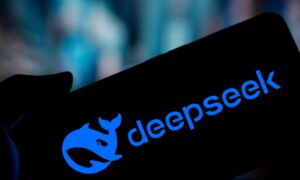Successful Launch of China’s Manus AI Agent

Overview of Manus: The New AI Agent
Manus is an innovative AI agent recently launched by the Chinese startup Butterfly Effect, capturing the attention of tech enthusiasts since its debut last week. The platform has received accolades from influential tech figures, such as Jack Dorsey, one of Twitter’s founders, and Victor Mustar, the product lead at Hugging Face. Some experts have compared Manus to other advanced AI models like DeepSeek, highlighting its unique features.
Key Features of Manus
Manus distinguishes itself by functioning as a fully autonomous agent that can integrate various AI models to perform a broad array of tasks without needing human direction. This capability is crucial for enhancing efficiency across different applications.
Multi-Agent Architecture
The Manus platform utilizes a multi-agent architecture, where a main coordinator, referred to as the "executor," directs specialized sub-agents. This method allows Manus to break down complex tasks effectively. In recent testing, Manus successfully handled several tasks, including:
- Compiling a list of prominent technology journalists covering developments in China.
- Searching for property listings in New York City.
- Nominating candidates for the Innovators Under 35 list.
While the platform showed promising results, especially for analytical tasks that require extensive online research, it did face some challenges. Users reported issues such as vague instructions leading to system crashes and other instabilities.
Praise and Challenges
Research Lead Yichao “Peak” Ji expressed confidence in Manus, asserting that it surpassed existing tools on the GAIA benchmark, which evaluates an AI’s capability to perform tasks via web browsing and software use. Ji emphasized that Manus serves as a fully autonomous agent that efficiently connects idea generation with execution.
However, not all users have had a seamless experience. Some early adopters encountered error messages and continuous loops, which hindered their testing efforts. For instance, Alexander Doria, a co-founder of the AI startup Pleias, reported running into these technical issues during his trials.
Current Status and Future Potential
Despite facing some initial hurdles, Manus represents a significant advancement in the realm of autonomous AI agents. A spokesperson for Butterfly Effect acknowledged the concerns raised by users, stating that their focus is on refining the Manus platform to enhance user problem-solving capabilities. They highlighted that the closed beta phase aims to test the system rigorously and address any emerging issues.
Many users have expressed creativity and enthusiasm for Manus, exploring diverse applications for the platform within just days of its launch. Some notable examples of its innovative use include:
- Utilizing Tesla’s Full Self-Driving (FSD) technology while Manus prepares talking points for meetings.
- Enhancing project management by automating routine research tasks.
As Butterfly Effect continues to optimize Manus, there is growing anticipation regarding its potential to transform industries that heavily rely on research and data analysis. The ongoing refinement process will likely unlock new capabilities, making Manus an even more valuable tool for various applications.
A Shift in AI Development
The emergence of Manus coincides with other advancements in AI development, such as OpenAI’s recently released Agent SDK, which significantly accelerates the creation of AI agents. This tool allows developers to build AI applications much more quickly than before, promising to revolutionize the landscape of AI technology.
In summary, while Manus is still in its early stages and grapples with certain challenges, its foundational design and innovative approach suggest that it could play a crucial role in shaping the future of autonomous AI agents. As the platform evolves and the developers address existing issues, its applications across different domains are likely to expand, potentially changing the way users interact with AI technology altogether.




